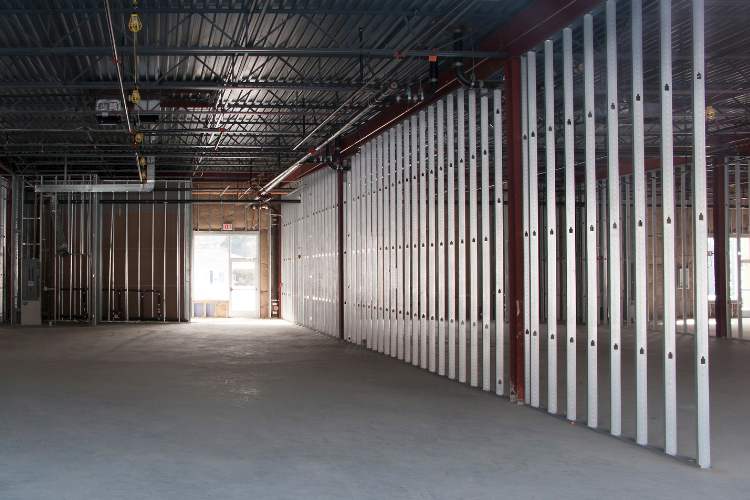As a subcontractor, you know how difficult it is to manage construction projects. You need to bring together suppliers, equipment, materials, and labor within an estimated budget and timeline. Managing workflows by hand can often lead to client dissatisfaction, budget overruns, delays, reduction of profit, and additional costs for project stakeholders.
According to the 2022 Billd Industry Report, as many as 72% of contractors are open to trying new technologies that will make their business more efficient. As a result, construction firms have adopted new technologies and processes to make construction elements more unified and streamlined, integrating workflows and data and ensuring stakeholder collaboration. This approach is known as connected construction. And today, we’ll discuss why it’s the future of the construction industry.
Table of Contents
What Is Connected Construction?
Connected construction technology is a network that integrates data across the project lifecycle, ensuring all information flows seamlessly from one system to another. This technology connects machines, job sites, and workers, making everyone’s job easier and increasing productivity, resulting in better project outcomes. Adopting this technology means having a centralized project management solution that can help reduce errors and miscommunication, streamline project and payment processes, and easily exchange data with stakeholders.
Firms use construction software and mobile apps to manage all aspects of their projects, including scheduling, design, project management, and field reporting. However, most of these tools are stand-alone and do not “communicate” with one another. As a result, contractors perform repetitive data entry, which can be time-consuming and prone to error.
But with connected construction, components work together as a body, ensuring collaboration among stakeholders to improve productivity and efficiency. It automates processes, keeps all stakeholders up to date, and aids in all phases of development, including design, planning, construction, handover, and commissioning. You can also use it while out in the field or the office. As Hewlett Packard writes, “Sensors and tags are used to connect job sites, machines, and workers, allowing for real-time visibility and analytical capabilities for managers… The connected network never sleeps, providing a constant stream of information and analytics to help guide project management.”
Components of Connected Construction
Connected construction technology includes the following components for centralized decision-making and management:
- Asset Tracking
- Synced Time Clocks
- Augmented and Virtual Reality
- Computer Vision
- Real-time Data Analytics
- Predictive Maintenance
What Is The Value of Connected Construction?
The value of connected construction is that it connects the industry’s complex components for a more efficient and effective workflow. This is why it is highly valued by owners and contractors and is quickly becoming the norm on job sites around the world. The following are some of the reasons why businesses use connected construction.
- Access to real-time updates and design changes that minimize risks – With connected construction, you have one source of information for the whole project. So, if one stakeholder makes a change, that change will be reflected everywhere, reducing errors and risk on-site. It helps project managers determine whether a project appears to be on time and within budget.
- Interoperability of the tools resulting in increased quality of work – Because connected construction includes software that communicates with other programs, information is automatically shared across programs, eliminating duplication of tasks and repetitive data entry. With everyone having access to connected tools, people can focus more on production and less on data collection.
- Enhance resources for improved operational processes – Connected construction technology uses Wi-Fi, on-ground sensors that monitor temperature and soil conditions, and onboard sensors that monitor equipment performance and maintenance to increase operational productivity.
- Manage connected assets – With connected construction’s asset intelligence network, site and operations managers can monitor the overall health of on-site assets, including stationary and mobile assets, to determine which require repair or maintenance.
- Data-driven decision-making – With accurate information readily available, everyone in each team (e.g., design team or construction team) can see the same data for faster decision making or issue resolution.
- Better communication and increased collaboration – When everybody’s on the same page, there’s a lot less delay in work time. Everybody sees the same thing, and therefore accountability is more apparent, and the approval process can be much smoother.
- Reduced conflict and project costs- Because stakeholders have a mutual understanding of the project’s outcome and requirements at the start when issues arise, they can be resolved more quickly, lowering project costs by preventing further risks.
Challenges in the Adoption of Connected Construction – Why Subs May Be Reluctant
While connected construction is a cutting-edge cross-functional construction technology that will solve problems on the job site, collaboration, and project management, it’s not a simple change in technology or process. Every innovation faces challenges, and connected construction is no exception, making some subcontractors hesitant to adopt it.
While connected construction can help subs with things like inventory management, scheduling and modeling, a study conducted by the Manufacturers Alliance for Productivity and Innovation (MAPI) and Deloitte showed that there’s a gap between having a technology and actually using it. While anywhere from 77-93% of companies had acquired a given technology, as few as 23-33% of them were successfully using it. Call it an implementation gap, which could exist for the following reasons:
Skillset
Making changes to current or traditional systems is difficult and time-consuming. When it comes to technology, the ability of people to adapt to new software is also a concern. It can be intimidating, and each company’s learning curve may differ from one another. One’s ability to pick things up can be slow or fast, affecting project timing.
To solve these issues, construction companies should provide training to employees so they can easily adapt to the new technology. The training should be delivered in an easy-to-understand manner. Construction firms can also place a greater emphasis on HR assessment processes to ensure that they hire only competent individuals who can use technological solutions and project management software.
Cost
The cost could also be an issue. Technology, particularly the various software applications used in construction, is not cheap. Larger companies may find it easier to adapt, but smaller companies may find it more difficult.
There will be costs associated with acquisition, deployment, and training. However, once implemented, you can use connected construction to create efficiencies, increase profits, and reduce costs over time. You can put the cost into perspective by calculating the return on investment or gradually implementing digital transformation. You should also make sure that your technology provider can clearly outline how and when this new technology will provide a return on investment.
Cybersecurity threat
Because connected construction relies more on technology, cybersecurity is becoming a growing concern. It is critical to protect the vulnerability of various tools and software, especially if there is only one interface to handle them all. A data breach or hacking into one’s account could potentially halt the progress of a project.
Therefore, it’s wise to exercise caution when incorporating new technology into your workflow. Ensure that any new provider you approach can tell you how they will protect your data and what legal standards they meet for data protection.
Every change is difficult at first, but once everything is in place, one could be reaping valuable benefits in no time.
How to Implement Connected Construction
Before you implement connected construction, you should first know what use cases you’ll use it for. You can use connected construction technology for the following purposes:
- Procurement and inventory management
- Energy management
- Safety intelligence
- Asset tracking and performance management
- Customer collaboration for design and ideation
- Quality sensing or remote inspection
- Controls and command center
- Dynamic scheduling
- Digital win and building information modeling
Adopting connected construction can be gradual to ensure that all participants collaborate effectively and easily. The first step should be to identify existing problems and the pain points to change. If you’re new to digitization, start with small changes that have an impact on your business and align with your vision.
Then, update your IT infrastructure. Before implementing new digital tools, you may need to upgrade your infrastructure to the cloud, update hardware such as laptops, strengthen cybersecurity, and replace existing CRM, accounting, and payroll software.
Once everything is in place, you can select the software you need. Determine whether an off-the-shelf or custom solution is better for your business. More businesses opt for semi-custom or custom business management software over off-the-shelf solutions because you can dictate what it does and add more functionality at your own pace.
Connected construction doesn’t end with the adoption of scheduling software, or tools to help you with takeoffs — although that doesn’t hurt. Connected construction is about using technology to encourage the interplay of subs, owners, suppliers, laborers, and more. It’s not about more standalone tools — it’s about an integrated vision. The goal is to shatter silos with technology.
To achieve this vision, it comes down to the tools you adopt (as well as the mentality). The companies below are leading the charge when it comes to connecting the disparate parts of a construction project. Integrations between software become more advanced every day, leading us to a future for construction that is truly connected.
- ConstructConnect – In their Bid Center platform, you can save up to 3 hours estimating each bid. Send projects straight to your digital takeoff tools with one click.
- GCPay – This tool fully automates the payment process between GCs and subs, simplifying a traditionally frustrating and drawn out process.
- Foundation Software – Foundation Software allows you to track every dollar, hour and quantity for every job, instantly generate reports on project cash flows, and receive automated alerts to avoid overruns.
- StructShare – StructShare empowers subs to stop error-prone manual entry, control every spend, and save over $100,000 a year with their digital procurement software.
- Brokrete – Brokrete is bringing suppliers online and connecting them with subs to make material purchases via ecommerce, creating a material procurement process as straightforward as Shopify.
Connected construction is an investment, not a cost. So a cash flow is important to make huge gains. You must prepare for acquisition, deployment, maintenance and support, risk management, and opportunity costs. It may be overwhelming for some subcontractors, but the benefits of adopting connected construction outweigh the costs. The tools are becoming available, change is on the horizon — the question is: are you willing to innovate your business with the tools of tomorrow?









